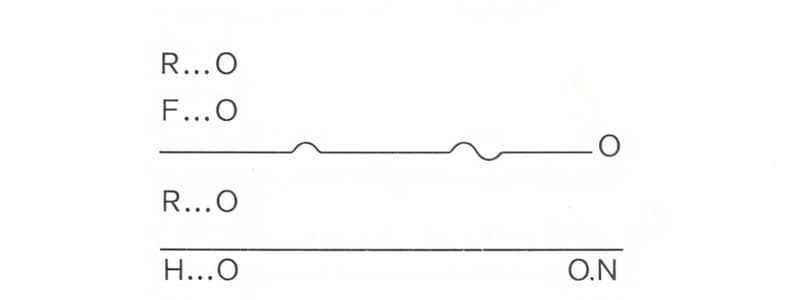Podcast
Questions and Answers
What effect does increasing the temperature generally have on reaction rates?
What effect does increasing the temperature generally have on reaction rates?
- Has no effect on the reaction rate
- Decreases the reaction rate
- Only affects gases and not solids
- Increases the reaction rate (correct)
How do catalysts affect chemical reactions?
How do catalysts affect chemical reactions?
- They provide an alternative reaction pathway with lower activation energy (correct)
- They decrease the frequency of collisions between molecules
- They are consumed in the reaction
- They increase the activation energy needed
Which factor does NOT affect the number of effective collisions in a reaction?
Which factor does NOT affect the number of effective collisions in a reaction?
- Surface area of solid reactants
- Frequency of collisions
- Mass of the products formed (correct)
- Orientation of colliding molecules
What is the role of the rate-determining step in a reaction mechanism?
What is the role of the rate-determining step in a reaction mechanism?
In the context of collision theory, what are effective collisions?
In the context of collision theory, what are effective collisions?
What does the order of a reaction indicate?
What does the order of a reaction indicate?
In a second-order reaction, how is the reaction rate described?
In a second-order reaction, how is the reaction rate described?
What effect does an increase in temperature generally have on the rate constant (k)?
What effect does an increase in temperature generally have on the rate constant (k)?
Which method is NOT commonly used to measure reaction rates?
Which method is NOT commonly used to measure reaction rates?
Which equation describes the temperature dependence of the rate constant (k)?
Which equation describes the temperature dependence of the rate constant (k)?
Flashcards
Reaction Rate
Reaction Rate
The speed at which a chemical reaction occurs.
Activation Energy
Activation Energy
Minimum energy needed for a reaction to occur.
Effective Collisions
Effective Collisions
Collisions with enough energy and proper orientation to form products.
Rate-Determining Step
Rate-Determining Step
Signup and view all the flashcards
Catalyst
Catalyst
Signup and view all the flashcards
Reaction Order
Reaction Order
Signup and view all the flashcards
First-Order Reaction
First-Order Reaction
Signup and view all the flashcards
Second-Order Reaction
Second-Order Reaction
Signup and view all the flashcards
Reaction Rate Constant (k)
Reaction Rate Constant (k)
Signup and view all the flashcards
Arrhenius Equation
Arrhenius Equation
Signup and view all the flashcards
Study Notes
Factors Affecting Reaction Rate
- Increasing temperature generally increases reaction rate. Higher temperatures give reactant molecules more kinetic energy, resulting in more frequent and energetic collisions and a higher likelihood of successful reactions.
- Higher reactant concentrations usually speed up reaction rates. This is because a greater concentration leads to more collisions between reactants, increasing the chance of successful collisions.
- A larger surface area for solid reactants leads to faster reaction rates, increasing the area exposed to the surroundings and thus collision frequency.
- Catalysts accelerate reaction rates by providing an alternate pathway with a lower activation energy. They are not consumed in the reaction and remain unchanged.
Collision Theory
- Reactions happen when reactant molecules collide with enough energy and proper orientation. Kinetic energy and the correct molecular orientation are key for successful reactions.
- Activation energy is the minimum energy needed for a reaction to occur. This energy is needed to overcome the energy barrier between reactants and products; molecules colliding without enough energy don't react.
- Effective collisions are those that lead to product formation. These collisions must have both the required activation energy and the correct orientation.
- Factors influencing effective collisions include collision frequency, molecular orientation, and kinetic energy of colliding particles.
Reaction Mechanisms
- A reaction mechanism details the sequential steps (elementary steps) of a reaction.
- The rate-determining step is the slowest step in a mechanism and controls the overall reaction rate.
- Intermediates are formed in one step and consumed in another during a reaction.
Rate Laws
- Rate laws show the relationship between reaction rate and reactant concentrations. They are determined experimentally and show the reaction order for each reactant.
- Reaction order indicates how reactant concentrations affect reaction rate.
- A first-order reaction's rate depends directly on the concentration of one reactant.
- A second-order reaction's rate is proportional either to the square of one reactant's concentration or to the product of the concentrations of two reactants.
Reaction Rate Constant (k)
- The rate constant (k) is a constant specific to a reaction at a set temperature.
- Increasing temperature typically significantly increases the rate constant (k), reflecting more collisions with enough energy to overcome the activation energy barrier.
- The Arrhenius equation describes the temperature dependence of the rate constant (k).
Rate Constant Unit
- Rate constant units depend on the overall order of the reaction.
Arrhenius Equation
- The Arrhenius equation describes the temperature dependence of the rate constant (k), relating it to activation energy (Ea), temperature (T), and a proportionality constant (A).
- This exponential relationship is helpful in determining activation energy by observing changes in the rate constant with temperature.
Measuring Reaction Rates
- Reaction progress can be followed by monitoring reactant disappearance or product appearance.
- Spectrophotometry measures changes in solution absorbance over time, useful for reactions with color changes.
- Titration tracks changes in reactant or product concentrations.
- Conductivity measurements are used for reactions involving ions.
Studying That Suits You
Use AI to generate personalized quizzes and flashcards to suit your learning preferences.




